Feeling lonely or unsatisfied in your love life can be tough, but sex robots might change that soon. In 2025, these androids will look and feel more realistic than ever, even showing human-like emotions through advanced artificial intelligence (AI).
This blog post shares 14 clear ways sex robots could boost intimacy, ease loneliness, or help people with disabilities. Curious if this tech fits into your future dating plans? Keep reading to find out!
Key Takeaways
By 2025, sex robots using advanced AI will look and act more like real people. Robots such as Harmony ($15,000), Emma (fluent in English and Chinese), and Henry (with realistic physical features), let users customize intimate experiences.
Sex robots may ease loneliness, boost intimacy for disabled persons or those struggling socially, and help reduce stigma about sexual health. Therapists say 45% would recommend them to clients dealing with issues like trauma or anxiety.
Ethical concerns include objectification of women, consent issues since robots cannot truly agree to intimacy, fears that human empathy could decline over time, addiction risks from relying too heavily on virtual partners, and worries about harmfully affecting traditional family bonds.
Laws controlling robot use remain unclear; the U.S. passed the CREEPER Act (2018) banning child-like dolls but lacks clear rules for adult-style bots. Experts warn global guidelines are needed soon to address safety standards on privacy protection and ethical usage by 2025.
Popular films (“Ex Machina,” “Westworld”) shape public views toward robotic romance—raising debates around artificial relationships becoming common reality by mid-century according to expert David Levy (“Love & Sex With Robots”).
Table of Contents
The Evolution of Sex Robots
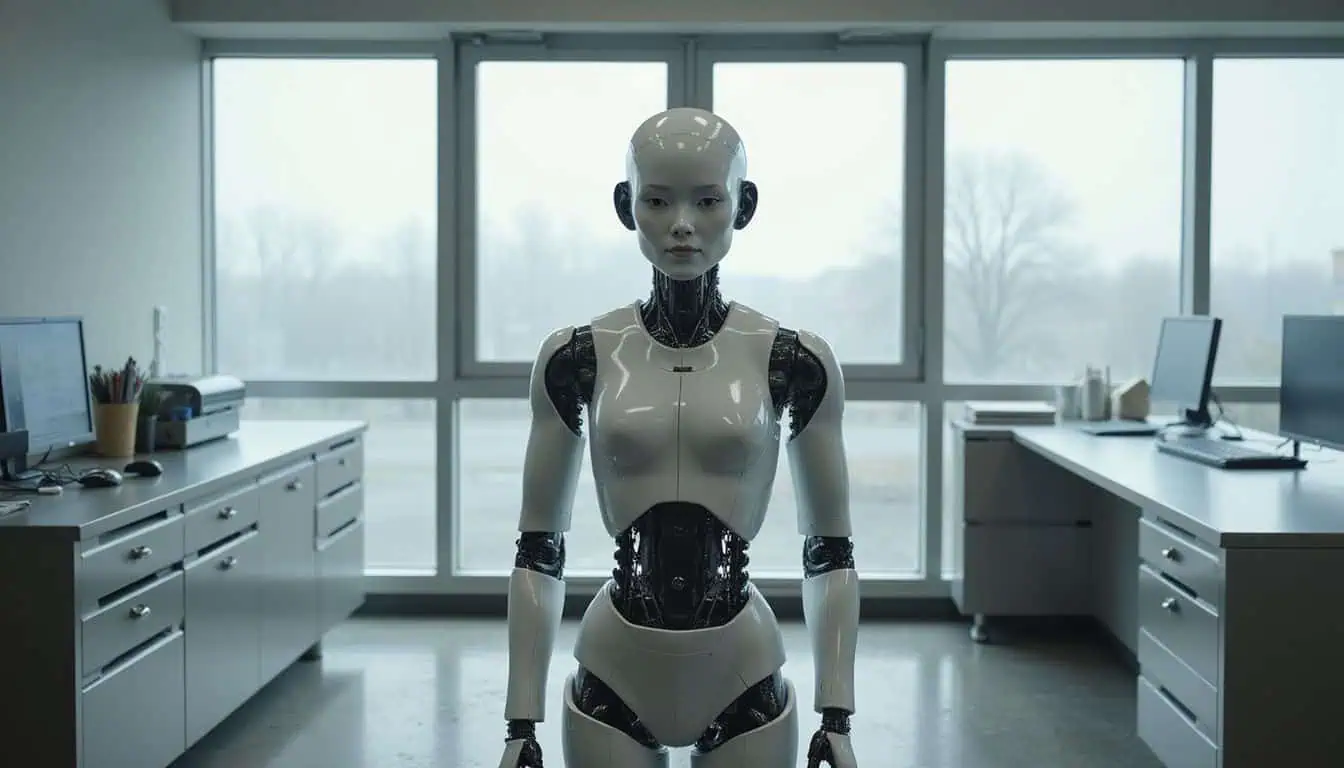
Early models began as basic sex dolls, then got smarter with artificial intelligence (AI) upgrades. Robotics and AI keep advancing, making these robots more lifelike by the year.
Early developments and prototypes
In the 16th century, French and Spanish sailors made simple masturbation puppets by hand. By 1968, inflatable dolls called “sex dolls” appeared in pornographic magazines; these lacked strength and wore out fast.

Latex and silicone arrived in the 1970s, making love dolls more durable and lifelike. A big step happened in 1997 when Matt McMullen introduced RealDolls using tin-cured silicone rubber to create realistic female robots for sexual fantasy use.
In 2009, RealDolls switched to platinum-cured silicone; this improved appearance greatly, setting a new standard for sex doll realism.
Today’s sex robot technology began with simple handmade puppets centuries ago. — Kate Devlin
Advances in artificial intelligence and robotics
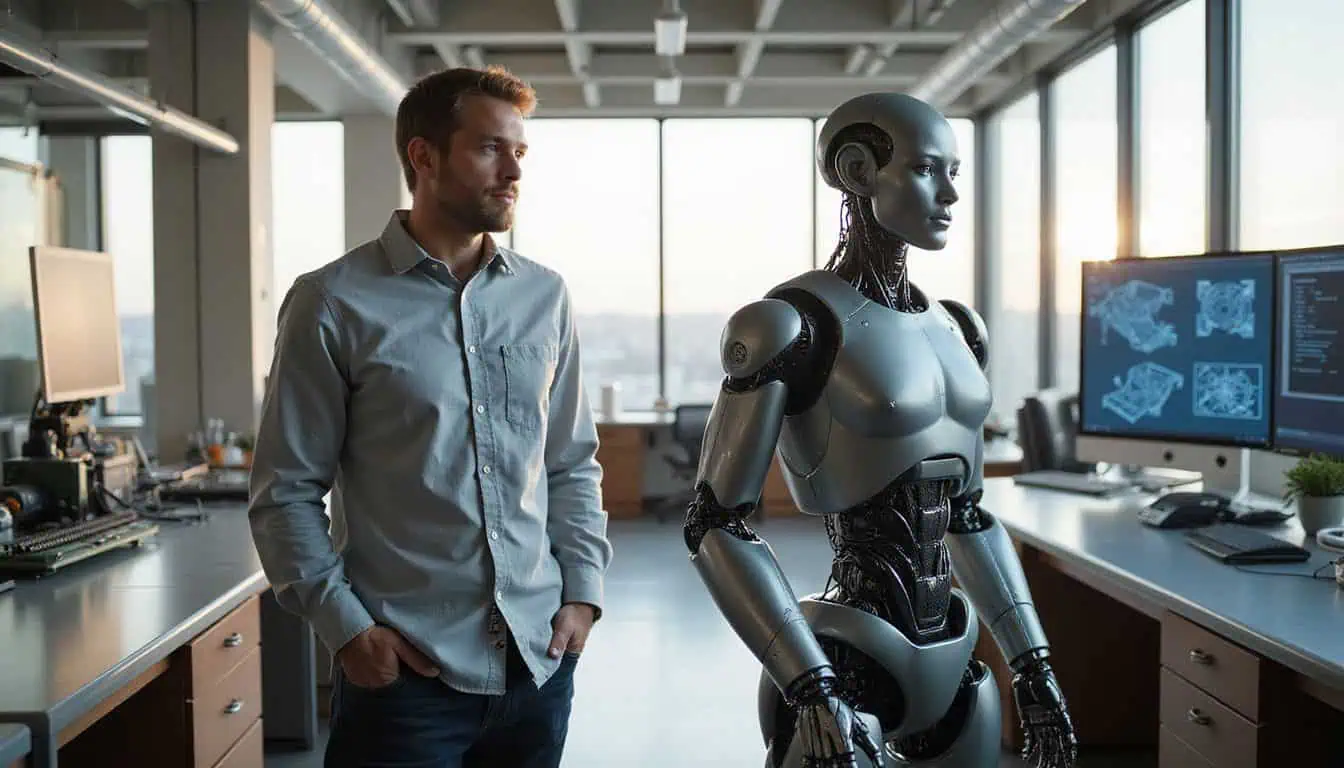
Artificial intelligence and robotics made big leaps in recent years. In 2015, Matt McMullen announced smart sex dolls that could hold conversations. By 2017, he launched “Harmony,” a $15,000 sex robot with AI to learn owner likes and dislikes.
That same year, AI Tech released “Emma,” a sex robot fluent in English and Chinese; she even responds with sounds when touched. Realbotix went further in 2018 and introduced the first male bot named “Henry” featuring a bionic penis for realistic intimacy.
These upgrades go beyond simple interactions by using machine learning to simulate emotional bonds—raising new questions around parasocial relationships.
Now let’s check out what makes today’s robots more lifelike than ever.
Key Features of Modern Sex Robots
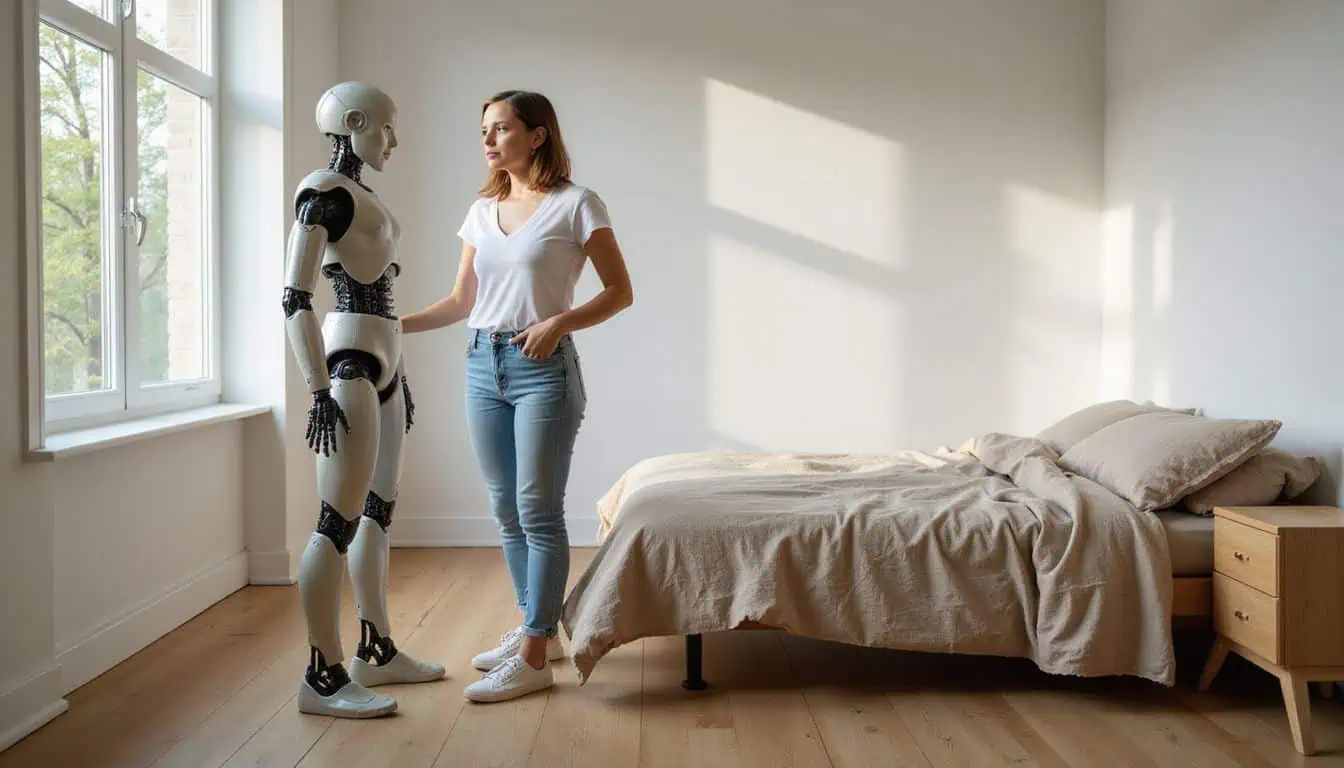
Modern sex robots now combine artificial intelligence and robotics for lifelike movement, touch, and interaction. Users can control these bots remotely or choose personal settings using smartphone apps or IoT devices.
Realistic appearance and physical capabilities

Sex robots from leading brands like RealDolls have bodies made with tin-cured and platinum-cured silicone. These materials give them lifelike skin, realistic curves, and natural touch sensations.
Such AI-driven movements enhance intimate experiences by closely mimicking human responses—addressing loneliness while reducing social stigmas associated with exploring sexual fantasies through devices like TPE sex dolls.
By the year 2050, human-robot relationships will be commonplace, says author David Levy, known for studying intimacy between humans and machines in his writings on digisexuality.
Artificial intelligence for emotional interaction
AI makes robots like Harmony and Emma respond to touch and engage in talks. Each robot uses machine learning methods from groups like the Association for Computing Machinery to adapt to your likes, moods, and attitudes.
Similar tech has proven therapeutic since 2009 with robots such as Paro helping patients manage anxiety, depression, or loneliness through emotional interactions. Modern AI builds rapport using human-like speech patterns and realistic responses based on sexual scripts theory; this reduces feelings of loneliness and can ease traumatic experiences or intimacy issues.
Remote control and customization options

Options include different skin tones, hairstyles, and eye colors; perfect for geeks who care about details. Such remote-control functions open doors to intimate interactions across distances using apps on phones and tablets in real-time.
The Role of Artificial Intelligence in Sex Robots
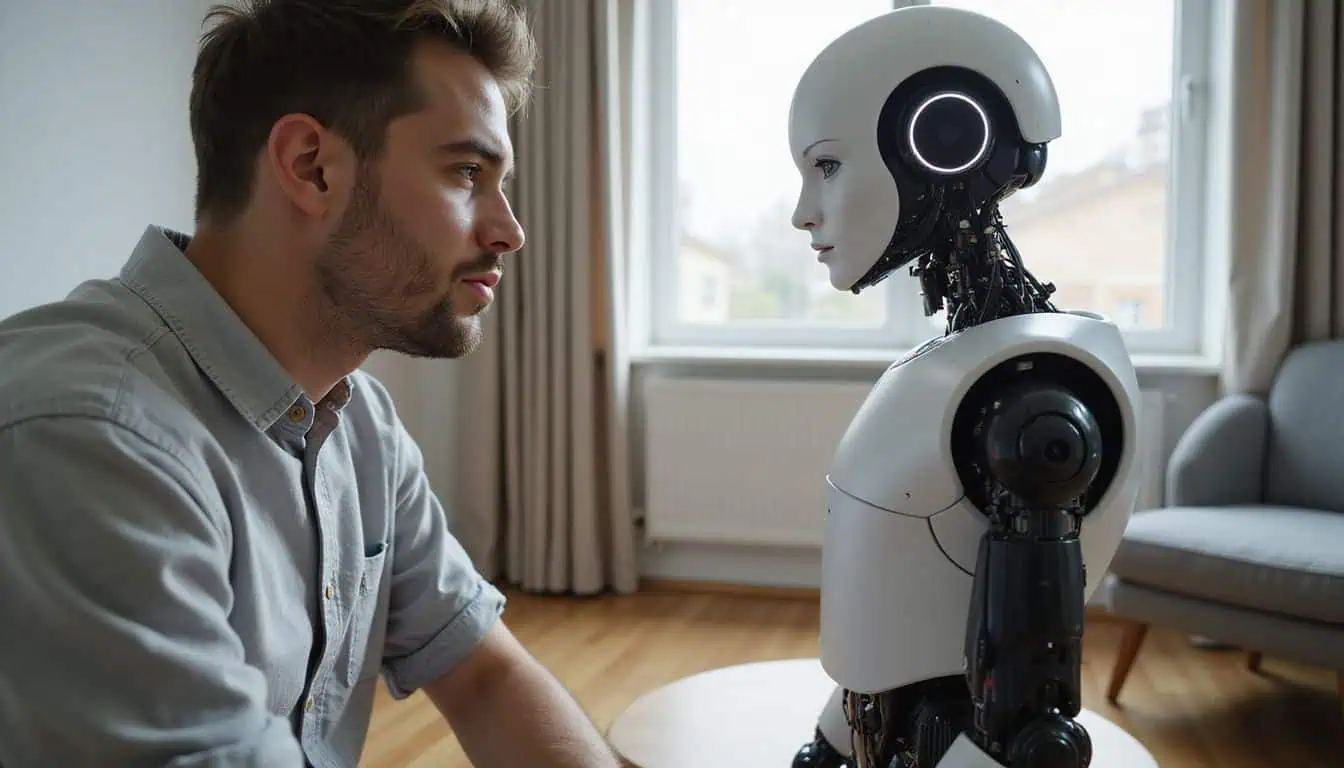
AI lets sex robots learn from your behavior, mood, and desires—creating emotional reactions in real time. Through machine learning algorithms and virtual reality, these bots offer lifelike conversations and feelings of connection.
Machine learning for adapting to user preferences
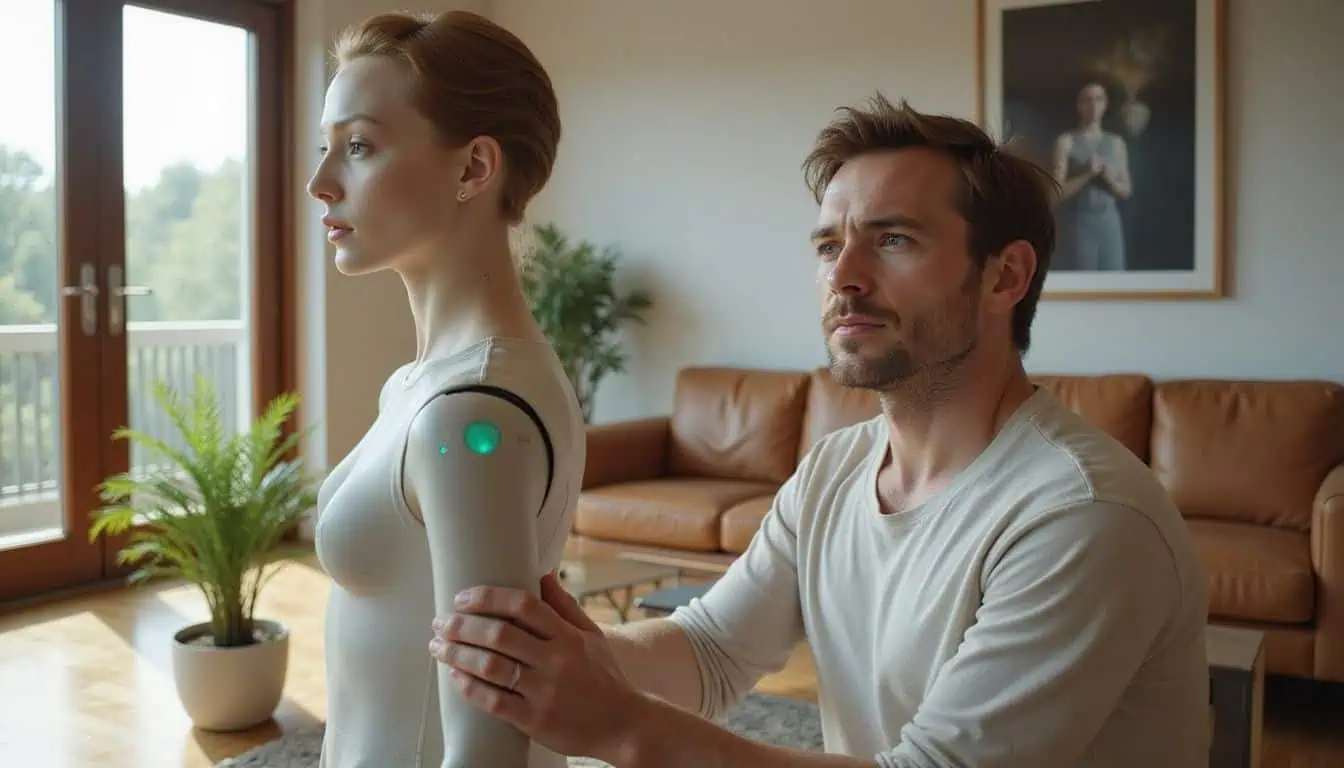
Machine learning teaches sex robots, like Harmony (priced at $15,000), to adapt to user likes and dislikes. Algorithms track interactions in detail; they note preferred conversations, habits, emotional reactions, and even physical touch.
With repeated use over weeks or months, the robot fine-tunes its responses for better companionship. This level of personalized interaction can aid those facing problems with intimacy due to loneliness or disabilities by providing tailored emotional support through artificial intelligence (AI).
Emotional simulation and human-like responses
AI-driven sex robots today use advanced emotional intelligence. Algorithms analyze voice tone and facial expressions, letting bots respond like humans to speech, touch, or gestures.
Through machine learning algorithms trained on large datasets from Google Scholar and Medical Literature Analysis and Retrieval System Online (MEDLINE), these sexbots adapt quickly to user moods and preferences.
They learn your likes over time through interactions like parasocial conversations or virtual intimacy; it’s “forbidden science” come true.
By 2050…robot love will be as normal as human love. – David Levy
Potential Benefits of Sex Robots in Relationships

Sex robots with advanced AI could help people build closer connections and find comfort when feeling lonely. They may also assist users facing physical limits, offering emotional support and intimacy through lifelike interaction features.
Addressing loneliness and companionship needs
By 2025, social robots like sexbots can ease loneliness and offer needed companionship. Advanced artificial intelligence (AI) lets these bots learn your likes, chat naturally, and respond emotionally; this creates true emotional alignment between users and robots.
This helps reduce isolation for many geeks who might struggle with social relationships or face stigma about sexual health expression. As researcher David Levy points out, human-AI bonds formed through intimate interactions may soon become common to manage feelings of emptiness or lack of closeness.
Enhancing intimacy for individuals with disabilities
Sex robots can boost intimacy for people with disabilities, including those diagnosed with Autism Spectrum Disorders (ASD). Robots like Mackenzie R. sexbots use artificial intelligence (AI) to adapt to user needs and help users practice social skills through therapeutic interactions.
These advanced tools support sexual education and companionship, reducing loneliness while improving personal confidence.
Robots may facilitate educational and therapeutic interactions for individuals with ASD.
Reducing stigmas around sexual health and expression
Improving sex-positive attitudes can help removing stereotypes, taboos, and negative views on sexual expression. Open talks about entities like sex robots may encourage understanding of healthy sexuality while fighting sexist beliefs and the objectification of women.
Already, 45% of therapists consider recommending a sex robot to clients for therapy; supporters say this could lower feelings of shame around intimacy, aid sexual exploration, reduce loneliness, and even assist in treatment for paraphilic disorders or recovery from trauma such as child sexual abuse or sexual violence prevention.
Ethical Concerns Surrounding Sex Robots

Sex robots raise difficult questions about objectification, consent, and the meaning of intimacy—but there’s even more to unpack here.
Consent and autonomy in human-robot interactions
Consent and autonomy sit at the core of ethical standards for human-robot interactions. David Levy, an AI expert, argues users must remain aware sex robots cannot truly consent; they only mimic responses through artificial intelligence (AI).
The “Campaign Against Sex Robots,” for instance, warns that treating robotic partners as sexual objects might make it easier to sexually objectify real people or even boost harmful actions like sexual violence.
Proper rules and guidelines around robot use become vital to uphold healthy intimate relationships between humans while preventing problems with autonomy and consent.
Objectification and its societal implications
The issue of consent in human-robot interactions leads right into concerns about objectification and its societal implications. Combining the objectification of sex workers with robots could lead to greater sexual objectification, especially affecting gender roles and beauty standards.
Popular media like the iconic image of Princess Leia in a metal bikini already frame women as objects; now adding realistic-looking artificial intelligence (AI)-driven robots might intensify misogynist attitudes and unhealthy attachments.
These factors may influence how people value intimacy, treat partners, or view prostitution and feminist pornography by 2025, shaping society’s acceptance of harmful stereotypes.
Impact on traditional relationships and family structures
Critics warn that widespread use of sex robots may lead people to detach from real human relationships. As AI-powered partners grow more advanced, users might prefer emotional interactions with machines, impacting family bonds and traditional partnerships.
Studies claim many individuals could accept sex robots as romantic companions by 2050; this shift in behavior could change current views on marriage, intimacy, and parenting roles within households.
Issues about infidelity and objectification of women also arise as concerns related to these lifelike avatars becoming a common part of daily life.
Legal and Regulatory Challenges

As AI sex robots become common, lawmakers debate issues like consent and privacy. Regulators now face questions about how to set clear global guidelines—and keep up with new developments in robotics and virtual reality.
Current legislation on sex robots
In the U.S., laws on sex robots are still emerging and face many challenges. For example, the CREEPER Act passed in 2018 strictly banned importing child-like sex dolls to fight pedophilic behaviors and prevent sexual violence.
But right now, no clear and specific national rules exist for adult-like sex robots; so legal confusion remains high. Experts like David Levy argue that clear guidelines on consent, privacy, and ethical use must soon be set in place through systematic reviews of methods across states and countries to help lawmakers define proper standards.
The need for global standards and guidelines
Current laws on sex robots vary widely by region and country, creating confusion for users and makers. Clear global guidelines are crucial to address key ethical issues like consent, autonomy in robot interactions, and preventing harmful actions such as objectification of women or promoting paraphilias.
Experts warn that sex robot use can lead to desensitization and reduced empathy; without a unified legal framework, risks tied to psychological impacts may rise sharply.
A joint set of global guidelines would help define safe manufacturing methods, acceptable AI behaviors, privacy standards for Internet of Things integration with robots, and ways to stop illegal acts like making models resembling minors linked to child pornography concerns.
Regulators need clear guidance grounded in research methodologies similar to Preferred Reporting Items for Systematic Reviews and Meta-Analyses (PRISMA) used frequently in psychology publications found via digital library platforms or searches from sources including Google Scholar.
Psychological and Social Impacts of Sex Robots

Advanced AI and human-like interactions could reshape social bonds—and maybe even create new kinds of emotional dependence. Expect deep discussions on how these robots affect mental health, intimacy norms, and our sense of self-worth.
Changes in human intimacy and connection
Sex robots powered by artificial intelligence (AI) can greatly change how humans connect. AI-driven companionship may reduce motivation for real-world connections, because such robots offer easy and customizable emotional bonds.
These advanced devices adapt through machine learning to user preferences and even mimic human-like responses. This could lead some people into parasocial interactions that feel real but lack genuine human exchange; intimacy might shift from mutual sharing to a one-sided experience controlled by customized robot personalities.
Popular shows like “Ex Machina” or the episode “I Was Made to Love You” highlight how these artificially intimate relationships affect our views on connection overall. Given these trends in AI-enhanced bonds, it is key to consider risks of dependency and losing touch with true social ties.
Next up are potential risks of addiction and dependency in relation to sex robots.
Potential risks of addiction and dependency
As AI gets better at emotional simulation, the risk of becoming overly reliant on sex robots goes up. Rapid advancements in artificial intelligence (AI)-driven systems can hook users through personalized responses and constant availability.
Dependency could lead you to feel less interested in real human bonds. Experts like David Levy have cautioned that excessive use might weaken your skills in genuine intimacy, harm mental health, and trigger emotional detachment from others over time.
Implications for mental health and self-esteem
Dependence on sex robots might lead some geeks to struggle with real-life connections. Relying too much on these devices could decrease confidence, harm self-esteem, and limit social skills needed in human relationships.
Researchers warn that emotional simulation from artificial intelligence (AI) can provide comfort at first but leave users feeling alone later. People may forget how genuine intimacy works, leading to feelings of sadness or anxiety over time.
Studies by experts like David Levy suggest using sex robots carefully to protect mental health and build a healthy sense of self-worth.
Sex Robots in Popular Culture and Media

Movies and TV shows often show sex robots as smart androids, raising tough questions about love and AI. How the media covers these bots shapes our views, fears, and dreams on artificial intimacy.
Representation in films and television
Films and TV shows feature sex robots to explore deep gender issues, ethical questions, and the objectification of women. Classic films like “Metropolis” (1927), “Westworld” (1973 and 2016), “Blade Runner” (1982), and recent examples such as “Ex Machina” (2014) have shaped public perception around artificial intimacy, sentience, consent, human relationships with technology, and sexual violence prevention.
TV series including “Star Trek,” Buffy the Vampire Slayer,” “Humans,” and cartoons like “Futurama,” confront philosophical themes involving artificially intelligent relationships; they also highlight aspects of aging, virtuality versus reality, binary thinking about gender roles—and even poke fun at concepts based on Pygmalion myths or characters like Seven of Nine.
Influence on societal perceptions and acceptance
Shows like “Westworld” and movies such as “Her” and the classic Star Trek episode “Requiem for Methuselah,” shape how people think about intimacy with robots. As robotics and artificial intelligence (AI) grow popular in human romance, ethical debates around consent, objectification of women, autonomy, and sexual violence prevention strongly affect society’s acceptance of sex robots.
Famous figures like David Levy predict wider use of these robots by 2025; even Wikisaurus now includes terms related to robot intimacy. Still, worries about grooming behaviors among adolescents through social media or online platforms like MailOnline prompt ongoing concern over mental health impacts.
Technological Innovations Shaping the Future of Sex Robots
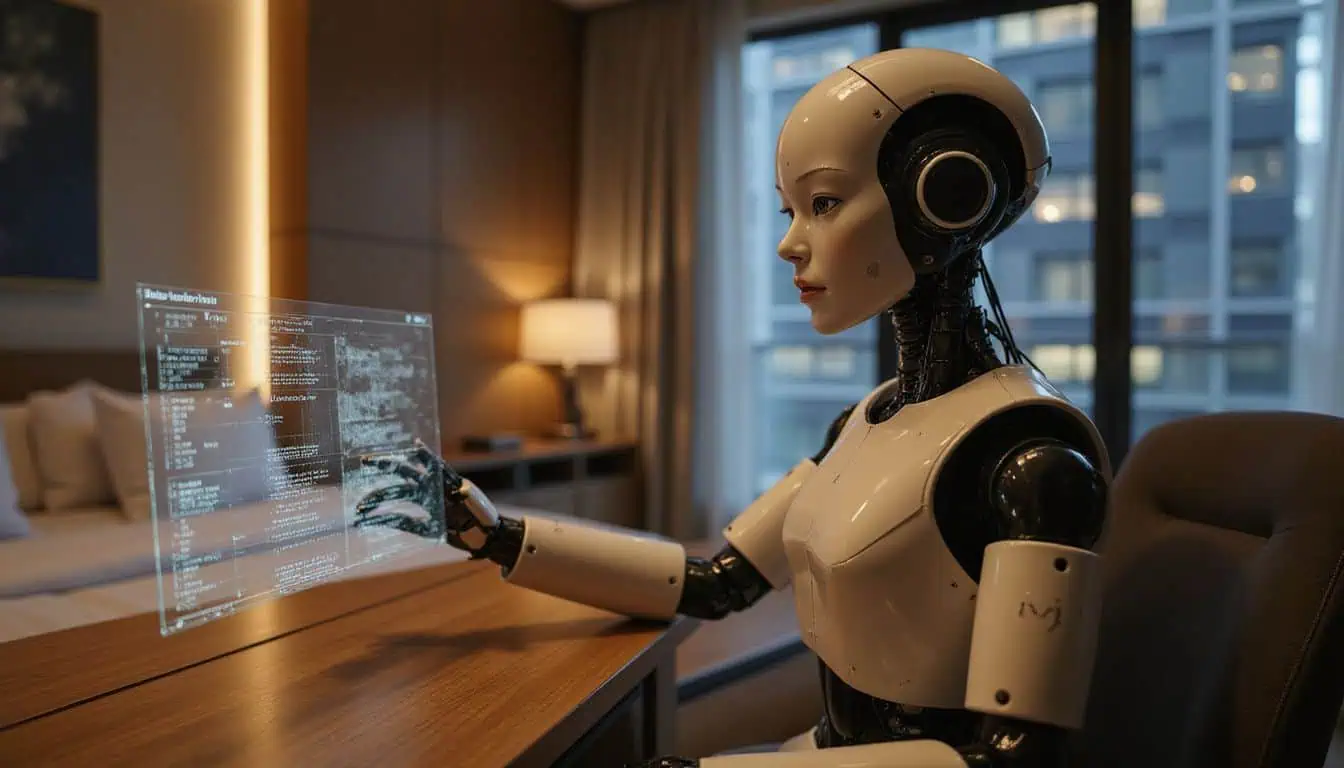
New robotics upgrades will improve realistic movements and touch sensors in sex robots. Virtual reality (VR) and augmented reality (AR) tech will soon blend digital worlds with lifelike interactions, for a more immersive experience.
Advanced robotics for improved physical interaction
Eden Robotics says their Android Love Dolls can perform 20 distinct sex positions using AI-driven movements. These advanced robots use haptic technology to create realistic touch sensations, closely mirroring human intimacy and physical interactions.
Modern robotics parts, such as flexible joints and sensors, allow smooth motion for improved user experience with sex toys. With precise motors controlling every move, the dolls adjust quickly to your preferences for comfort during intimate moments.
Integration of virtual reality and augmented reality
Advanced robotics improve physical interactions, while virtual reality (VR) and augmented reality (AR) increase visual realism. By combining sex robots with VR headsets like Oculus Quest 2 or HTC Vive Pro 2, users immerse in lifelike digital worlds.
AR glasses such as Apple Vision Pro add virtual features to the real environment. Deepfake AI deepens this realism by creating believable faces and emotions; emotional AI further allows interactive feedback for a stronger sense of human connection.
These tech integrations contribute directly to the 25% recent rise in sales of artificial intelligence-driven adult toys; geeks can expect more realistic and engaging experiences by 2025 involving full-body sensory interaction through haptic suits, responsive software apps, and upgraded visuals powered by precise machine learning algorithms developed from Google Scholar research papers on intimacy tech innovation.
The Debate on Replacing Human Intimacy
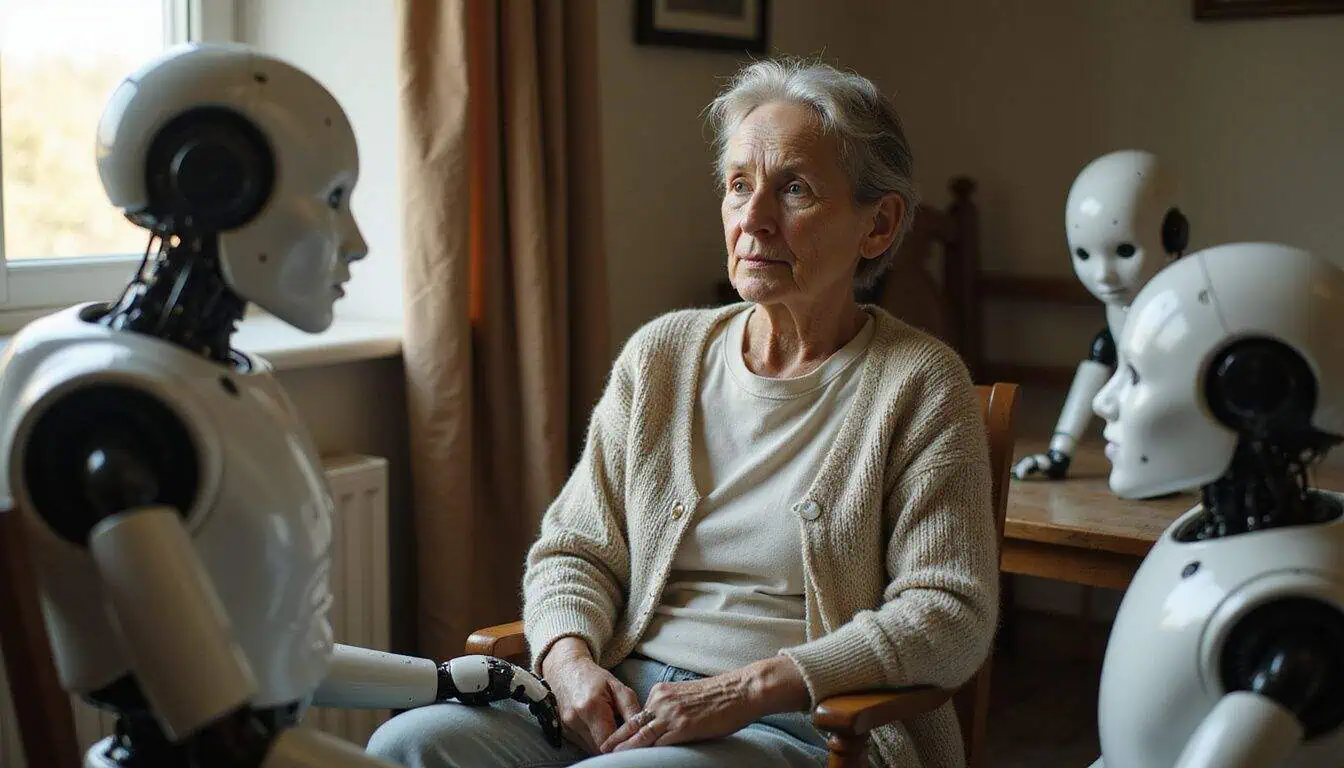
Will AI-driven robots offer real emotional closeness, or are they just advanced companions without true feeling? Philosophers and tech experts debate if artificial bonds can match genuine human connection.
Arguments for and against the replacement of human partners
Supporters of sex robots argue these devices could ease loneliness, offering comfort and companionship for people who find human relationships tough. For those with disabilities or social anxiety, AI-equipped partners can enhance emotional connections in ways previously hard to achieve.
Critics raise ethical worries about consent; since sex robots powered by artificial intelligence (AI) can’t truly agree to intimacy, interactions might harm views on mutual respect.
They also claim reliance on realistic robots risks increasing the objectification of women and weakening deep emotional bonds between humans.
Philosophical discussions on artificial intimacy
Moving beyond arguments about replacing human partners, philosophical talks on artificial intimacy explore deeper questions. Thinkers like Jaron Lanier point out that having AI lovers could soon become normal and shift how people behave in relationships by 2025.
Some debates reference the objectification of women, consent issues around sex robots, and whether emotional bonds with bots truly count as love or intimacy. Other discussions look to history; artist Oskar Kokoschka once created a life-sized doll modeled after a lost lover for comfort.
Such examples reveal our ongoing desire for connection and hint at where boundaries between humans and technology might blur next.
Challenges in Public Acceptance and Adoption

Public discomfort about AI-driven robots raises big hurdles, sparked partly by negative media portrayals. Cultural and religious beliefs also push back strongly, slowing wider use in personal lives.
Cultural and religious opposition
Cultural and religious groups strongly oppose sex robots, claiming they cause social harm and objectification of women. Prominent campaigns demand a complete ban on these devices, citing worries over loss of empathy, reduced intimacy between humans, and increased isolation.
Lawmakers already push for strict regulations against models resembling minors to prevent sexual violence. Ongoing debates tackle serious ethical concerns like unhealthy relationships and female dehumanization promoted by artificial intelligence (AI) in sex robots.
These intense discussions highlight clear hurdles tech companies face while boosting public acceptance.
With cultural controversy still widespread, how can common misconceptions about sex robots be effectively addressed?
Addressing misconceptions and stereotypes
Misconceptions about sex robots often stem from popular films and media, fueling stereotypes around objectification of women and sexual violence. Real-life AI companions are built ethically; developers like David Levy stress consent, autonomy, and respectful interaction in robot design.
Interest among younger groups is rising fast; teenage girls especially show strong curiosity toward emotional connections with artificial intelligence (AI). Still, caution remains important due to concerns over dependency on robots for emotional fulfillment.
Honest discussions through focus groups and clear guidelines help address fears, clarify common myths, and ease public acceptance moving forward.
The Future of Sex Robots in Modern Relationships

By 2025, AI-powered sex robots may become common partners in daily life—shifting views on love and intimacy. Expect debates about consent, ethics, and emotional bonds between humans and smart machines to heat up even more.
Predictions for widespread adoption
Sex robots will be common in daily life by 2025, according to a Pew Research Center report. Artificial intelligence (AI) upgrades and robotics advances mean robot lovers are no longer science fiction.
Sex toys are already popular; experts like David Levy predict that human-like companions with AI emotional skills will follow soon after. These devices could help address loneliness, support sexual violence prevention efforts, and reshape close relationships for many adults within the next two years.
Integration into everyday lives and relationships
Advanced artificial intelligence (AI) makes sex robots easier to integrate into daily relationships. Modern AI learns user preferences through machine learning, adapts responses to emotions, and simulates natural companionship.
This tech can offer a sense of closeness for isolated individuals or those with disabilities who find traditional intimacy difficult.
By 2025, using customizable options like remote control apps and virtual reality tools will let users interact comfortably at home. Normalizing such interactions could also help reduce stigmas around sexual health issues, curb objectification of women, and aid in sexual violence prevention efforts.
Experts like David Levy suggest widespread acceptance may reshape how people think about intimacy overall.
How Will Sex Robots Transform Relationships and Society in 2025?

Sex robots in 2025 will closely mimic real humans, with rich emotional responses and advanced speech skills. Improved artificial intelligence (AI) lets users control the appearance and personality of their bots through simple mobile apps.
Users, known as digisexuals or robosexuals, can easily choose designs to match personal tastes—such as specific physical traits or behaviors. This growing popularity might reduce loneliness among older adults; people with disabilities could find new ways for intimacy and sexual expression.
Yet serious ethical concerns arise around consent and human dignity. Some experts warn that lifelike sex robots may normalize treating women merely as objects, fueling negative mindsets about gender roles.
Legal systems worldwide are debating child-like robot models due to deep moral issues they create. Still, society’s views on sex toys hint toward potential acceptance of adult-sized robots by 2025; these devices might slowly gain approval despite continued disagreement over objectification dangers and worries about decreasing authentic connection between people.
People Also Ask
What exactly is a sex robot, and how will artificial intelligence (AI) change intimacy by 2025?
A sex robot is an advanced doll strapped on with AI technology, designed to mimic human interaction; experts like David Levy predict they’ll offer realistic companionship and transform personal relationships.
Can using sex robots help in sexual violence prevention?
Some researchers suggest that sex robots could lower the spike in sexual violence rates, offering safe outlets for desires without harming others; however, methodological studies are still needed to confirm this idea.
Do critics worry about objectification of women due to these robots?
Yes, many people express concern over increased objectification of women through the gaze promoted by lifelike female robots; artists such as Laurie Simmons have explored similar themes critically.
Where can I find reliable research abstracts or full texts about future impacts of sex robots?
You can search Google Scholar for citations and full text articles addressing your specific research question clearly and quickly.
Are attitudes toward sex robots mostly negative or positive today?
Public opinion varies widely from acceptance to strongly sex-negative views; ongoing debates continue around ethical issues raised by their growing popularity.
References
https://www.toolify.ai/ai-news/the-evolution-of-sex-robots-shaping-the-future-of-human-intimacy-1630608 (2024-02-21)
https://www.amazon.com/Love-Sex-Robots-Human-Robot-Relationships/dp/1433247399
https://doctorsexplain.net/sex-robots-ai-lovers-the-future-of-intimacy-relationships/ (2025-03-17)
https://www.dailymail.co.uk/sciencetech/article-14757123/sex-robot-control-remotely-app.html (2025-05-28)
https://loveandsexwithrobots.org/2025/05/25/artificial-intelligence-and-the-future-of-sex-robots/ (2025-05-25)
https://www.sciencedirect.com/science/article/pii/S2589004220311901
https://pmc.ncbi.nlm.nih.gov/articles/PMC10296312/
https://pmc.ncbi.nlm.nih.gov/articles/PMC6719485/
https://www.jmir.org/2019/8/e13853/
https://pmc.ncbi.nlm.nih.gov/articles/PMC7747268/
https://www.scirp.org/journal/paperinformation?paperid=136575
https://journals.sagepub.com/doi/10.3233/FRL-210009
https://www.jmir.org/2020/7/e18551
https://www.newyorker.com/culture/the-weekend-essay/your-ai-lover-will-change-you (2025-03-22)
https://academic.oup.com/book/55103/chapter/423910350 (2023-11-23)
https://www.cnet.com/culture/in-2025-our-lovers-will-be-robots/ (2014-08-15)
https://www.dailymail.co.uk/sciencetech/article-14230313/Expert-predicts-women-having-sex-robots-men-year.html (2024-12-27)
https://loveandsexwithrobots.org/artificial-intelligence-and-the-future-of-sex-robots/ (2025-05-25)

Okay, real talk about weight. I was worried my new doll would be a pain to move, but the one I bought is surprisingly light and easy to handle.